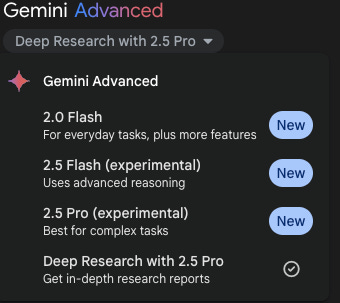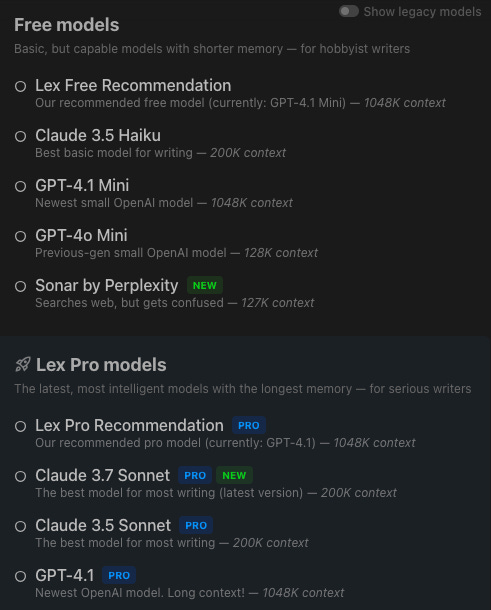Why is AI marketing so, so bad?
And how it counterintuitively predicts which companies succeed
Author’s note: Welcome to the first paid edition of The Leverage deep dives! In these essays, I research the questions that are most urgent in technology, with the goal of finding an answer that is insightful and actionable. This week I tackle why all the AI research labs are bad at naming new models and what that indicates about the larger market.
My analysis as an independent writer is only possible because of paying subscribers, so if you want to support my work, you can join my paid tier. (If you no longer want to receive The Leverage, you can unsubscribe with the button at the bottom of this post.)
And with that, on to the show.
According to LinkedIn data, OpenAI has 682 employees working on marketing in some capacity. Yet, OpenAI Chief Product Officer Kevin Weil has said their model naming is “horrible” and “absolutely atrocious.” Altman has also expressed similar sentiments.
If 682 people’s best efforts still result in publicly derided work, the problem is structural, not individual.
GPT-o4-mini-high, GPT-4o, Gemini 2.5 Flash (experimental), Mistral 7B, Mistral 8x7B. This is a niggling and persistent problem for all AI companies, not just OpenAI: naming an LLM product is damn near impossible.
Let’s read the tea leaves of bad product marketing to understand what this bodes for the future of our century’s fastest-growing companies. Is it that model providers don’t need to bother with marketing because their products are improving so fast and believe they’ll continue to do so? Or is this a sign that OpenAI and its ilk will eventually be outpaced by specific applications, left behind as mere infrastructure providers?
The current state of AI marketing
Typical product marketing in software works like this:
1) Engineers create a bunch of features.
2) Product managers stick those features into a bundle.
3) Product marketers give that bundle a name that describes its capability, the mission of the company, or the problem it will solve for customers.
4) Demand marketers generate inbound customers while using that name and a description of those features.
5) Sales send emails to people who respond to those ads (and complain about having to do so).
6) The cycle repeats itself.
Contrast this with how an model company like OpenAI does things:
1) A research team trains a model.
2) In parallel, a product manager and engineering team build features they believe will work best with the model, because they want the code to be ready at roughly the same time the model is.
3) In parallel, your CEO is fighting off a coup from his board or working at DOGE.
4) Some whiz kid on the research team makes a technical improvement, but no one is sure how it will land with users. Management demands they ship it anyway because they are in a desperate race to stay ahead of their competition.
5) Turns out that this new feature was exactly what consumers were craving. Servers burn to the ground, growth hockey sticks, and everyone is excited.
6) Marketing is never consulted because no one knew this would be a big thing.
You do this across a company with thousands of employees and dozens of different models, and you get a product organizational hierarchy that looks like this:
This is a classic Moloch-style coordination failure—everyone acts rationally, yet the system makes the outcomes worse for all participants. I’m sure that no one working at OpenAI likes the screenshot above. To make matters worse, researchers continue to fine-tune the models based on user behavior patterns, so the product changes slightly every day. At some point in the improvement, it is probably worth a new name—but when? And who makes that call?
These are just the problems that arise from internal coordination! Add in the fact that ChatGPT is used for tasks as diverse as debugging code, doing taxes, and writing Harry Potter fan fiction. Oh wait—it also has fundamental capabilities that would’ve been their own software suite in yesteryears, such as photo generation or data analysis. Then, sprinkle in that the company is doing all of this for customers ranging from my grandmother to the White House. This is an impossible situation to market for! No wonder these teams can’t figure it out.
It doesn’t matter how many marketing employees OpenAI has, they won’t be able to solve the problem. This product bundles together more features for more types of customers than any other software in human history. Of course it is going to break the typical product marketing process.
This isn’t specific to OpenAI. Here is Google’s ChatGPT competitor:
Even AI applications that use these models struggle with this problem. Here is a screenshot from the word processor I write in, Lex.
Because model capabilities are so murky and only obvious to power users, and because OpenAI’s product marketing team hasn’t been able to name the exact differences between the models, workflow-specific applications built on OpenAI models are limited to describing their vibes. Lex describes different options as “best model for most writing” or “searches web, but gets confused.”
And OpenAI appears to continue to decide its model names by sprinkling the blood of a virgin intern into a bag of Scrabble tiles, praying to get something good, and picking whatever jumble of letters comes out.
You would think this couldn’t go on. Right?
In normal products, the next step would be obvious—you would break apart the product into multiple new feature bundles, typically around:
Customer type: You keep the same feature set, but rename and rebrand on the basis of customer size, vertical, or use case.
Workflow: You organize the product by the task the customer is trying to accomplish.
Or there is the easiest—and most heavy-handed—method, which OpenAI currently uses. Keep all branding the same and use prices to filter user types. OpenAI’s is free tier, Plus at $20 a month, and Pro at $200 a month.
In a regular software market, this would be enough. Weird product naming would be a growing pain that would eventually smooth out as models became commodities, and model providers would compete on branding. However, there is a wild card that is hanging over this entire discussion: AGI. Part of the reason that none of these companies have bothered to fix their naming and branding is that the models are improving so fast that sharing technical updates have worked just fine as marketing. Will that continue to be the case?
Keep reading with a 7-day free trial
Subscribe to The Leverage to keep reading this post and get 7 days of free access to the full post archives.





